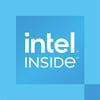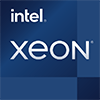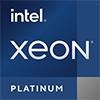Intel Core i5-7500 Benchmark, Test and specs
Last updated:
The Intel Core i5-7500 has 4 cores with 4 threads and is based on the 7. gen of the Intel Core i5 series. The processor uses a mainboard with the LGA 1151 socket and was released in Q1/2017. The Intel Core i5-7500 scores 961 points in the Geekbench 5 single-core benchmark. In the Geekbench 5 multi-core benchmark, the result is 3,091 points.
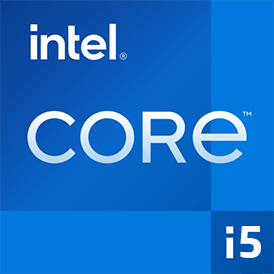
| Name: | Intel Core i5-7500 |
|---|---|
| Family: | Intel Core i5 (331) |
| CPU group: | Intel Core i 7000 (17) |
| Architecture: | Kaby Lake S |
| Segment: | Desktop / Server |
| Generation: | 7 |
| Predecessor: | Intel Core i5-6500 |
| Successor: | Intel Core i5-8500 |
CPU Cores and Base Frequency
The Intel Core i5-7500 has 4 CPU cores and can calculate 4 threads in parallel. The clock frequency of the Intel Core i5-7500 is 3.40 GHz (3.80 GHz). The number of CPU cores greatly affects the speed of the processor and is an important performance indicator.
| CPU Cores / Threads: | 4 / 4 |
|---|---|
| Core architecture: | normal |
| Cores: | 4x |
| Hyperthreading / SMT: | No |
|---|---|
| Overclocking: | No |
| Frequency: | 3.40 GHz |
| Turbo Frequency (1 Core): | 3.80 GHz |
| Turbo Frequency (4 Cores): | 3.60 GHz |
Internal Graphics
The Intel Core i5-7500 has integrated graphics, called iGPU for short. Specifically, the Intel Core i5-7500 uses the Intel HD Graphics 630, which has 192 texture shaders and 24 execution units. The iGPU uses the system's main memory as graphics memory and sits on the processor's die.
| GPU name: | Intel HD Graphics 630 |
|---|---|
| GPU frequency: | 0.35 GHz |
| GPU (Turbo): | 1.10 GHz |
| Compute units: | 24 |
| Shader: | 192 |
| Hardware Raytracing: | No |
| Release date: | Q2/2016 |
| Max. displays: | 3 |
|---|---|
| Generation: | 9.5 |
| Direct X: | 12 |
| Technology: | 14 nm |
| Max. GPU Memory: | 64 GB |
| Frame Generation: | No |
Hardware codec support
A photo or video codec that is accelerated in hardware can greatly accelerate the working speed of a processor and extend the battery life of notebooks or smartphones when playing videos.
| h265 / HEVC (8 bit): | Decode / Encode |
|---|---|
| h265 / HEVC (10 bit): | Decode / Encode |
| h264: | Decode / Encode |
| VP8: | Decode / Encode |
| VP9: | Decode / Encode |
| AV1: | No |
|---|---|
| AVC: | Decode / Encode |
| VC-1: | Decode |
| JPEG: | Decode / Encode |
Memory & PCIeThe processor can use up to 64 GB memory in 2 (Dual Channel) memory channels. The maximum memory bandwidth is 38.4 GB/s. The memory type as well as the amount of memory can greatly affect the speed of the system. |
|
| Memory type: | Memory bandwidth: |
|---|---|
| DDR4-2400 | 38.4 GB/s |
| Max. Memory: | 64 GB |
| Memory channels: | 2 (Dual Channel) |
| ECC: | No |
| PCIe: | 3.0 x 16 |
| PCIe Bandwidth: | 15.8 GB/s |
Thermal ManagementThe thermal design power (TDP for short) of the processor is 65 W. The TDP specifies the necessary cooling solution that is required to cool the processor sufficiently. The TDP usually gives a rough idea of the actual power consumption of the CPU. |
|
|---|---|
| TDP (PL1 / PBP): | 65 W |
| TDP (PL2): | -- |
| TDP up: | -- |
| TDP down: | -- |
| Tjunction max.: | -- |
Technical details
The Intel Core i5-7500 is made in 14 nm. The smaller the manufacturing process of a CPU, the more modern and energy-efficient it is. Overall, the processor has 6.00 MB cache. A large cache can greatly speed up the processor's speed in some cases such as games.
| Technology: | 14 nm |
|---|---|
| Chip design: | Monolithic |
| Socket: | LGA 1151 |
| L2-Cache: | -- |
| L3-Cache: | 6.00 MB |
| AES-NI: | Yes |
| Operating systems: | Windows 10, Linux |
| Virtualization: | VT-x, VT-x EPT, VT-d |
|---|---|
| Instruction set (ISA): | x86-64 (64 bit) |
| ISA extensions: | SSE4.1, SSE4.2, AVX2 |
| Release date: | Q1/2017 |
| Release price: | 220 $ |
| Part Number: | -- |
| Documents: | Technical data sheet |
Rate this processor
Benchmark results

The benchmark results for the Intel Core i5-7500 have been carefully checked by us. We only publish benchmark results that have been created by us or that have been submitted by a visitor and then checked by a team member. All results are based on and fullfill our benchmark guidelines.
Geekbench 5, 64bit (Single-Core)
Geekbench 5 is a cross plattform benchmark that heavily uses the systems memory. A fast memory will push the result a lot. The single-core test only uses one CPU core, the amount of cores or hyperthreading ability doesn't count.
|
|
Intel Xeon Gold 5215
10C 20T @ 3.40 GHz |
||
|
|
Intel Xeon E5-1620 v3
4C 8T @ 3.60 GHz |
||
|
|
Intel Xeon E5-2697 v3
14C 28T @ 3.60 GHz |
||
|
|
Intel Core i5-7500
4C 4T @ 3.80 GHz |
||
|
|
Intel Core i3-10100E
4C 8T @ 3.80 GHz |
||
|
|
Intel Core i3-8140U
2C 4T @ 3.90 GHz |
||
|
|
Intel Processor N200
4C 4T @ 3.70 GHz |
||
Geekbench 5, 64bit (Multi-Core)
Geekbench 5 is a cross plattform benchmark that heavily uses the systems memory. A fast memory will push the result a lot. The multi-core test involves all CPU cores and taks a big advantage of hyperthreading.
|
|
Intel Core i5-6600T
4C 4T @ 3.10 GHz |
||
|
|
Intel Core i7-2600K
4C 8T @ 3.80 GHz |
||
|
|
AMD Ryzen 3 2300X
4C 4T @ 3.80 GHz |
||
|
|
Intel Core i5-7500
4C 4T @ 3.60 GHz |
||
|
|
Intel Core i7-3840QM
4C 8T @ 2.80 GHz |
||
|
|
MediaTek Kompanio 1300T
8C 8T @ 2.60 GHz |
||
|
|
AMD Ryzen 7 2800H
4C 8T @ 3.30 GHz |
||
Geekbench 6 (Single-Core)
Geekbench 6 is a benchmark for modern computers, notebooks and smartphones. What is new is an optimized utilization of newer CPU architectures, e.g. based on the big.LITTLE concept and combining CPU cores of different sizes. The single-core benchmark only evaluates the performance of the fastest CPU core, the number of CPU cores in a processor is irrelevant here.
|
|
AMD EPYC 7702P
64C 128T @ 3.35 GHz |
||
|
|
Intel Core i7-5775R
4C 8T @ 3.80 GHz |
||
|
|
Intel Xeon Gold 6138
20C 40T @ 3.70 GHz |
||
|
|
Intel Core i5-7500
4C 4T @ 3.80 GHz |
||
|
|
Intel Core i5-1034G1
4C 8T @ 3.60 GHz |
||
|
|
Intel Core i5-1035G1
4C 8T @ 3.60 GHz |
||
|
|
Intel Core i7-7660U
2C 4T @ 4.00 GHz |
||
Geekbench 6 (Multi-Core)
Geekbench 6 is a benchmark for modern computers, notebooks and smartphones. What is new is an optimized utilization of newer CPU architectures, e.g. based on the big.LITTLE concept and combining CPU cores of different sizes. The multi-core benchmark evaluates the performance of all of the processor's CPU cores. Virtual thread improvements such as AMD SMT or Intel's Hyper-Threading have a positive impact on the benchmark result.
|
|
Intel Core i7-4860HQ
4C 8T @ 2.40 GHz |
||
|
|
Intel Core i7-4770S
4C 8T @ 3.10 GHz |
||
|
|
Intel Core i7-7700HQ
4C 8T @ 3.40 GHz |
||
|
|
Intel Core i5-7500
4C 4T @ 3.60 GHz |
||
|
|
Intel Core i7-5950HQ
4C 8T @ 3.50 GHz |
||
|
|
Intel Core i7-6870HQ
4C 8T @ 3.20 GHz |
||
|
|
Intel Core i7-6820HQ
4C 8T @ 3.20 GHz |
||
iGPU - FP32 Performance (Single-precision GFLOPS)
The theoretical computing performance of the internal graphics unit of the processor with simple accuracy (32 bit) in GFLOPS. GFLOPS indicates how many billion floating point operations the iGPU can perform per second.
|
|
AMD A8-6500
AMD Radeon HD 8570D @ 0.84 GHz |
||
|
|
AMD A8-5545M
AMD Radeon HD 8510G @ 0.55 GHz |
||
|
|
AMD FX-7500
AMD Radeon R7 - 512 (Kaveri) @ 0.55 GHz |
||
|
|
Intel Core i5-7500
Intel HD Graphics 630 @ 1.10 GHz |
||
|
|
Intel Pentium Gold G6505T
Intel HD Graphics 630 @ 1.10 GHz |
||
|
|
Intel Pentium Gold G6505
Intel HD Graphics 630 @ 1.10 GHz |
||
|
|
Intel Pentium Gold G6605
Intel HD Graphics 630 @ 1.10 GHz |
||
Estimated results for PassMark CPU Mark
Some of the CPUs listed below have been benchmarked by CPU-monkey. However the majority of CPUs have not been tested and the results have been estimated by a CPU-monkey’s secret proprietary formula. As such they do not accurately reflect the actual Passmark CPU mark values and are not endorsed by PassMark Software Pty Ltd.
|
|
Intel Core i7-4810MQ
4C 8T @ 3.70 GHz |
||
|
|
Intel Core i7-5700HQ
4C 8T @ 3.20 GHz |
||
|
|
Intel Core i5-6600
4C 4T @ 3.60 GHz |
||
|
|
Intel Core i5-7500
4C 4T @ 3.60 GHz |
||
|
|
MediaTek Dimensity 1100
8C 8T @ 2.60 GHz |
||
|
|
AMD FX-8350
8C 8T @ 4.10 GHz |
||
|
|
Intel Core i5-1030NG7
4C 8T @ 3.20 GHz |
||
Blender 2.81 (bmw27)
Blender is a free 3D graphics software for rendering (creating) 3D bodies, which can also be textured and animated in the software. The Blender benchmark creates predefined scenes and measures the time (s) required for the entire scene. The shorter the time required, the better. We selected bmw27 as the benchmark scene.
|
|
Intel Core i3-9100
4C 4T @ 3.80 GHz |
||
|
|
Intel Core i3-9100F
4C 4T @ 3.80 GHz |
||
|
|
Intel Core i5-8265U
4C 8T @ 2.30 GHz |
||
|
|
Intel Core i5-7500
4C 4T @ 3.60 GHz |
||
|
|
Intel Core i5-6500
4C 4T @ 3.40 GHz |
||
|
|
Intel Core i7-4700MQ
4C 8T @ 3.00 GHz |
||
|
|
Intel Core i5-4670
4C 4T @ 3.60 GHz |
||
CPU-Z Benchmark 17 (Single-Core)
The CPU-Z benchmark measures a processor's performance by measuring the time it takes the system to complete all benchmark calculations. The faster the benchmark is completed, the higher the score.
|
|
AMD Ryzen 5 2600
6C 12T @ 3.70 GHz |
||
|
|
Intel Core i3-8100
4C 4T @ 3.60 GHz |
||
|
|
Intel Core i7-10510U
4C 8T @ 3.70 GHz |
||
|
|
Intel Core i5-7500
4C 4T @ 3.60 GHz |
||
|
|
Intel Core i5-8300H
4C 8T @ 3.60 GHz |
||
|
|
Intel Core i5-4670K
4C 4T @ 3.60 GHz |
||
|
|
Intel Core i7-8565U
4C 8T @ 2.40 GHz |
||
CPU-Z Benchmark 17 (Multi-Core)
The CPU-Z benchmark measures a processor's performance by measuring the time it takes the system to complete all benchmark calculations. The faster the benchmark is completed, the higher the score.
|
|
Intel Core i7-4810MQ
4C 8T @ 2.80 GHz |
||
|
|
Intel Core i5-6600
4C 4T @ 3.30 GHz |
||
|
|
Intel Core i5-4690
4C 4T @ 3.50 GHz |
||
|
|
Intel Core i5-7500
4C 4T @ 3.40 GHz |
||
|
|
Intel Core i3-8100
4C 4T @ 3.60 GHz |
||
|
|
Intel Core i7-3630QM
4C 8T @ 2.40 GHz |
||
|
|
Intel Xeon E3-1505M v5
4C 8T @ 2.80 GHz |
||
Cinebench R15 (Single-Core)
Cinebench R15 is the successor of Cinebench 11.5 and is also based on the Cinema 4 Suite. Cinema 4 is a worldwide used software to create 3D forms. The single-core test only uses one CPU core, the amount of cores or hyperthreading ability doesn't count.
|
|
AMD Ryzen 7 1800X
8C 16T @ 4.00 GHz |
||
|
|
Intel Core i5-8400
6C 6T @ 4.00 GHz |
||
|
|
Intel Xeon E3-1230 v5
4C 8T @ 3.80 GHz |
||
|
|
Intel Core i5-7500
4C 4T @ 3.80 GHz |
||
|
|
Intel Core i5-8259U
4C 8T @ 3.80 GHz |
||
|
|
Intel Core i5-8305G
4C 8T @ 3.80 GHz |
||
|
|
Intel Xeon Platinum 8156
4C 8T @ 3.70 GHz |
||
Cinebench R15 (Multi-Core)
Cinebench R15 is the successor of Cinebench 11.5 and is also based on the Cinema 4 Suite. Cinema 4 is a worldwide used software to create 3D forms. The multi-core test involves all CPU cores and taks a big advantage of hyperthreading.
|
|
AMD Ryzen 5 3500U
4C 8T @ 3.00 GHz |
||
|
|
AMD Ryzen 5 3580U
4C 8T @ 3.00 GHz |
||
|
|
AMD Ryzen 5 PRO 3500U
4C 8T @ 3.00 GHz |
||
|
|
Intel Core i5-7500
4C 4T @ 3.60 GHz |
||
|
|
Intel Core i3-8100
4C 4T @ 3.60 GHz |
||
|
|
AMD FX-8370E
8C 8T @ 3.80 GHz |
||
|
|
Intel Xeon E5-2623 v4
4C 8T @ 2.90 GHz |
||
Benchmarks

Geekbench 5 (SC)
2,488 entries
2,488 entries

Geekbench 5 (MC)
2,461 entries
2,461 entries

Geekbench 6 (SC)
1,755 entries
1,755 entries

Geekbench 6 (MC)
1,703 entries
1,703 entries

FP32 SP (iGPU)
2,042 entries
2,042 entries

PassMark CPU-Mark
2,392 entries
2,392 entries

Blender 2.81 (bmw27)
190 entries
190 entries
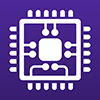
CPU-Z Benchmark 17 (SC)
231 entries
231 entries

CPU-Z Benchmark 17 (MC)
733 entries
733 entries

V-Ray CPU-Render
249 entries
249 entries

Cinebench R15 (SC)
1,106 entries
1,106 entries

Cinebench R15 (MC)
1,101 entries
1,101 entries

Geekbench 3 (SC)
942 entries
942 entries

Geekbench 3 (MC)
938 entries
938 entries

Cinebench R11.5 (SC)
825 entries
825 entries

Cinebench R11.5 (MC)
836 entries
836 entries

Cinebench R11.5 iGPU
383 entries
383 entries
Description of the processor
The Intel Core i5-7500 is a seventh generation processor of the Intel Core i5 family. It was launched in the first quarter of 2017 and is based on Intels Kaby Lake S architecture. The processor comes from the desktop segment of the i5 family, is manufactured with a structure width of 14 nanometers and is based on a monolithic chip design. The Intel Core i5-7500 is designed for a mainboard with the LGA 1151 socket and has a 6.00 megabyte level 3 cache.The processor consists of 4 processor cores, so it is a quad-core processor. Hyperthreading is not supported by the processor and it does not have a free multiplier, which means it cannot be overclocked. The 4 processor cores have a base clock of 3.40 gigahertz and the maximum turbo clock is 3.80 gigahertz. However, this maximum clock rate is no longer achieved if all four cores are utilized at the same time, then the maximum clock rate is only 3.60 gigahertz.
The Intel Core i5-7500 is equipped with an internal graphics unit; Intel has installed the Intel HD Graphics 630 here. This graphics unit has 24 execution units with 192 shader units and can supply up to 3 monitors with one image. The base clock speed of the graphics is 350 megahertz, but the clock speed can increase to up to 1.10 gigahertz in turbo mode. The graphics unit then achieves an FP32 computing power (single precision) of 422 GigaFLOPS. The iGPU is manufactured with a structure width of 14 nanometers and can use up to 64 gigabytes of the systems built-in RAM.
The Intel Core i5-7500 itself has 2 memory channels and can be operated with up to 64 gigabytes of DDR4-2400 RAM. Automatic error correction memory (ECC memory) is not supported by the processor.
Popular comparisons
back to index





